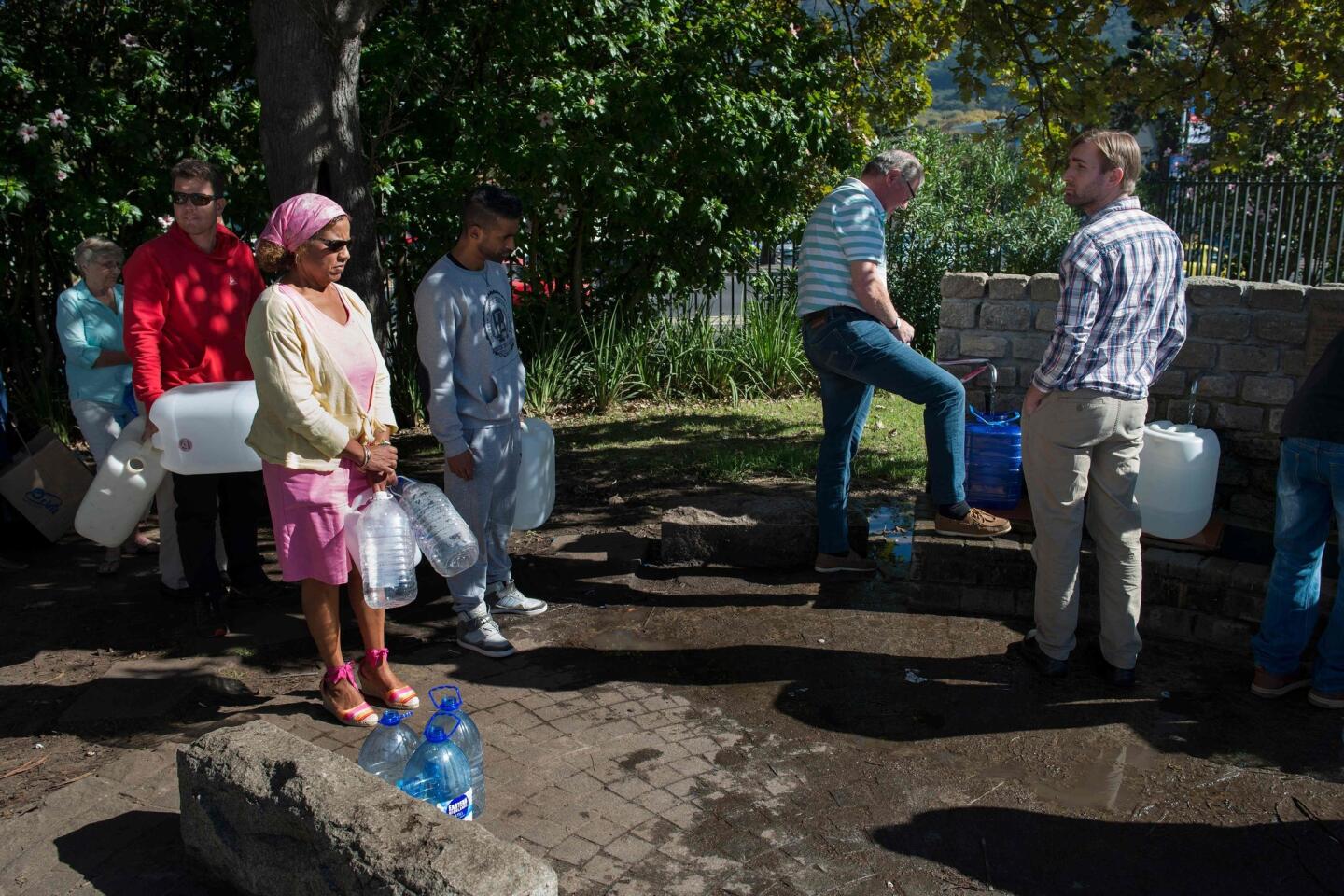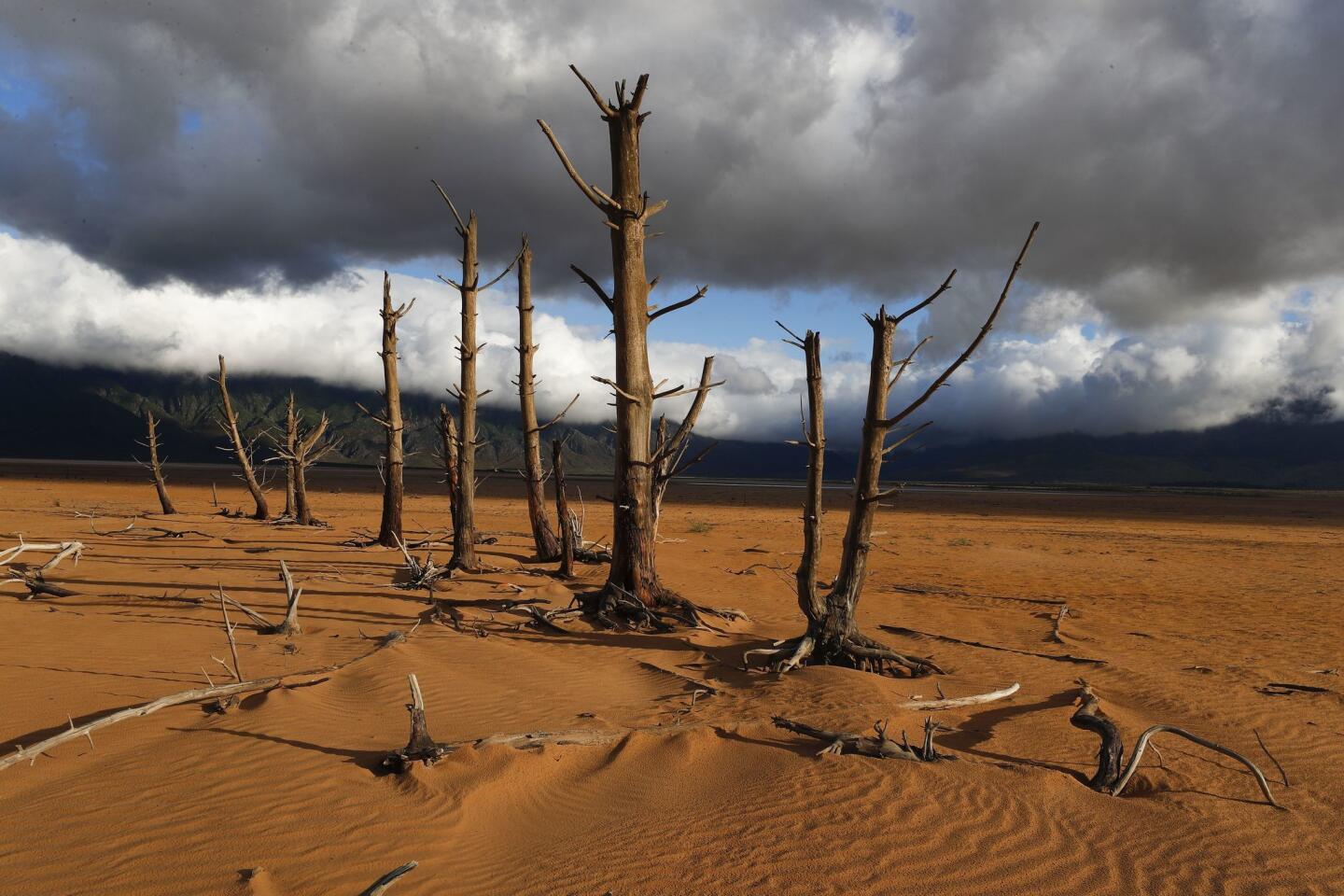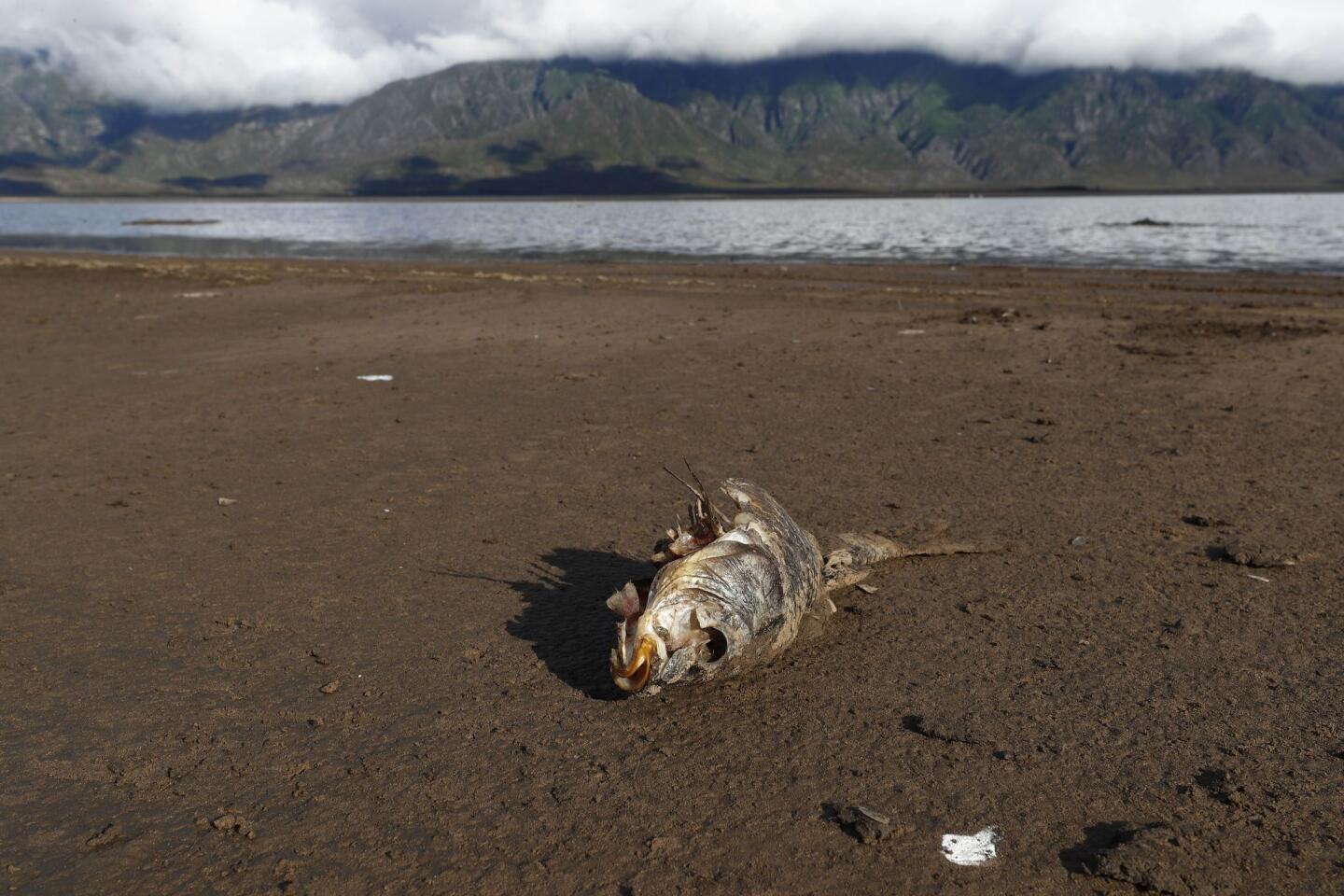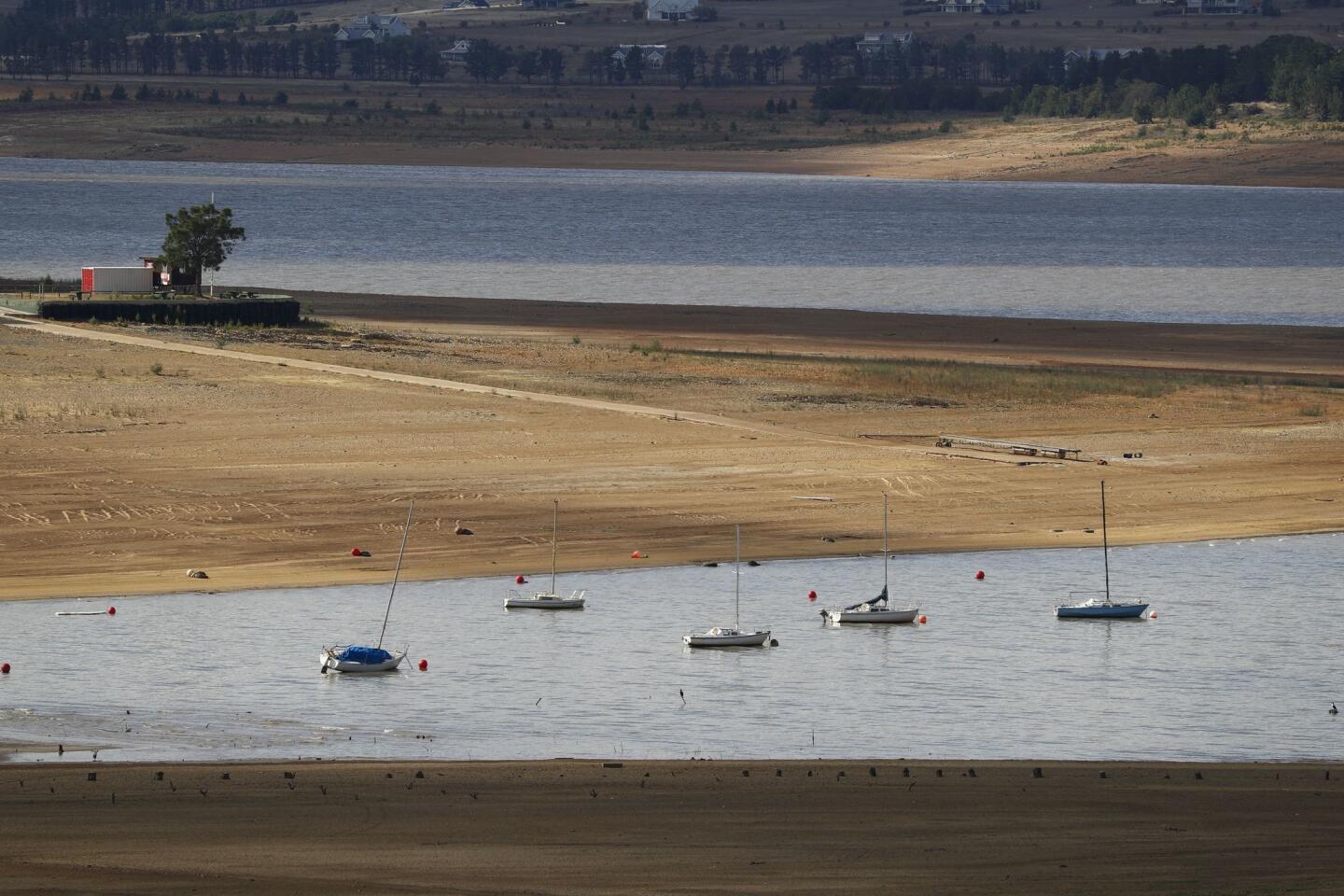In Cape Town, ‘Day Zero’ is coming very soon — the day the water runs out
- Share via
Cape Town, South Africa’s second-largest city, is facing its worst drought in a century, with its water supply expected to run dry April 21.
They’re calling it “Day Zero.” In this city of 4 million, people will have to line up in the streets at just 200 water stations. The police and army will enforce a limit of 6.6 gallons per person and adopt measures to control crowds. Some experts believe evacuations will be necessary.
If the city runs out of water, it will be the first major city in a developed country to do so.
But a number of details of the crisis plan remain unclear. How would one person carry 26 gallons of water for a family of four? How would the elderly and disabled cope? What about the fact that officials expect there will be insufficient water to flush the city’s toilets?
“A lot of the logistics are not known, and that’s worrying and it’s causing a lot of alarm. We just never get any answers, which tells us there is no plan,” said resident Brigetti Lim Banda, who started a Facebook page on the water crisis. “We are at the point where it’s impossible to avoid Day Zero.”
Last week, the Cape Town city government moved Day Zero a week forward to April 22, blaming citizens for using too much water. This week, it advanced ominously again, by one day.
After three years of drought, towns across eastern and southern Africa have faced troubles, and some already have had to import water. None, though, are as large as Cape Town.
The problem boils down to sharp population growth and a failure to plan alternative water sources to augment the reservoirs behind six dams, some of which are rapidly dwindling to arid sandy stretches. The dams have fallen to 15.2% capacity of usable water, compared with 77% in September 2015.
Here, residents are now rationed to 23 gallons a person each day. But only 39% of citizens are meeting the target. After February, they will be cut to 13 gallons.
“The average ordinary citizen is reaching the breaking point,” said Anthony Turton, a water expert at the Center for Environmental Management at the University of Free State. “You have people saying, ‘Enough,’ and ‘No further.’ ”
“Everyone has got buckets, and we’re using buckets because we have to recycle all the water we can,” said Lim Banda. “We have buckets in the shower, buckets in the kitchen, buckets in the laundry.
“I forgo my shower for three days until the fourth day, when I need to wash my hair, so that I can save my water for laundry and so forth.”
Swimming pools are empty. People with lush gardens are suspect. Householders capture recycled graywater to flush toilets.
Analysts say there is indeed a serious risk the city will run dry.
“I think it’s a very serious threat. Nobody saw how serious the crisis could be until recently,” said Magalie Bourblanc, public policy analyst at the Center for the Study of Governance Innovation at the University of Pretoria. “They need to prepare the population for that.”
Cape Town, capital of South Africa’s Western Cape province, faces a long-term water problem because of climate change and drought, much as has been seen in recent years in Australia, India and the western United States.
But the water crisis here has been worsened by government planning failures and buck passing between the national and city governments.
Families who surpass their water ration must agree to have a water restriction device installed on their pipes.
The city dropped a drought levy and an initial plan to shame flagrant water guzzlers by publishing an internet map of every household with red dots identifying the worst abusers. But this week it released a milder version of the map — with green dots identifying those who are meeting targets.
The city has banned filling pools, washing cars, hosing down sidewalks and watering gardens, golf courses or sports fields using municipal water. Play pools and ornamental fountains are outlawed.
Water-saving tips abound on social media. One resident, Shafeek Davids, posted videos of himself in the shower, showing how to cut usage to just six pints, standing in a bucket, dousing himself briefly, soaping up, then rinsing.
Bourblanc said Cape Town city authorities reacted too late to the crisis, despite warnings dating to 2004.
Until recently, the city rejected the idea of a desalination plant as too costly, but it now has a slew of new water projects, including desalination plants, recycled water plants (which purify reclaimed water) and new efforts to tap groundwater. But all but one of these efforts are behind schedule, and experts fear they will not avert the arrival of Day Zero.
“That was the mistake of Cape Town, ignoring those early warnings and relying only on water conservation and water demand management,” Bourblanc said. “It was based on normal rainfall conditions, and in South Africa, you can never rely on that. There was no other plan to quickly augment the water supply.”
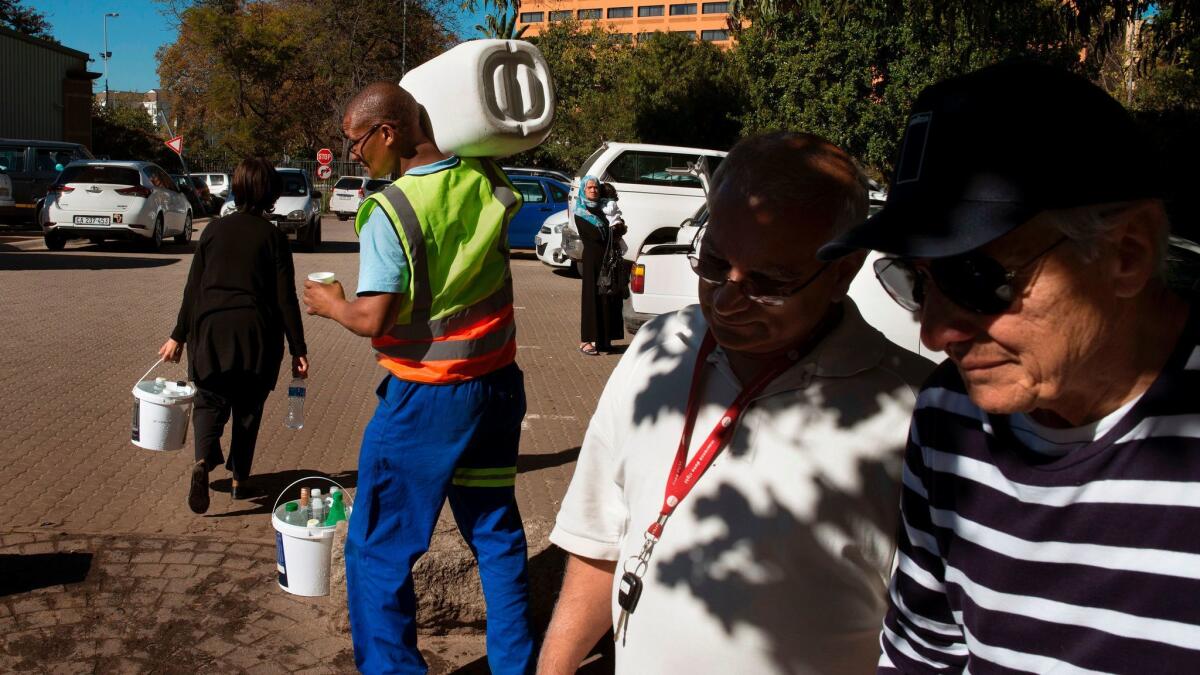
The national government is responsible for building water infrastructure, and municipalities distribute water. But part of the problem is political. The opposition Democratic Alliance won control of the city in 2006 and the province in 2009.
Western Cape Premier Helen Zille and provincial authorities have accused the national African National Congress government of failing to build and maintain new infrastructure and send adequate emergency drought relief. It was not until August that the national government allocated the city $1.5 million to deal with the crisis.
But Turton, of the Center for Environmental Management, said both sides were to blame.
“Politicians have been trying to deflect the blame from themselves. None of that energy has been focused on what are we going to do about it,” he said. “The response of the national government, the ANC, has been to almost deliberately starve the province and the infrastructure they needed.”
For their part, Turton said, city authorities did not recognize the impact of rapid population growth on water demand. The city’s population has doubled since 1999.
“The city didn’t understand the depth of the crisis,” he said. “They incorrectly assumed that this is a short-term drought and the problem will go away when the drought is over.”
Twitter: @RobynDixon_LAT
More to Read
Sign up for Essential California
The most important California stories and recommendations in your inbox every morning.
You may occasionally receive promotional content from the Los Angeles Times.
